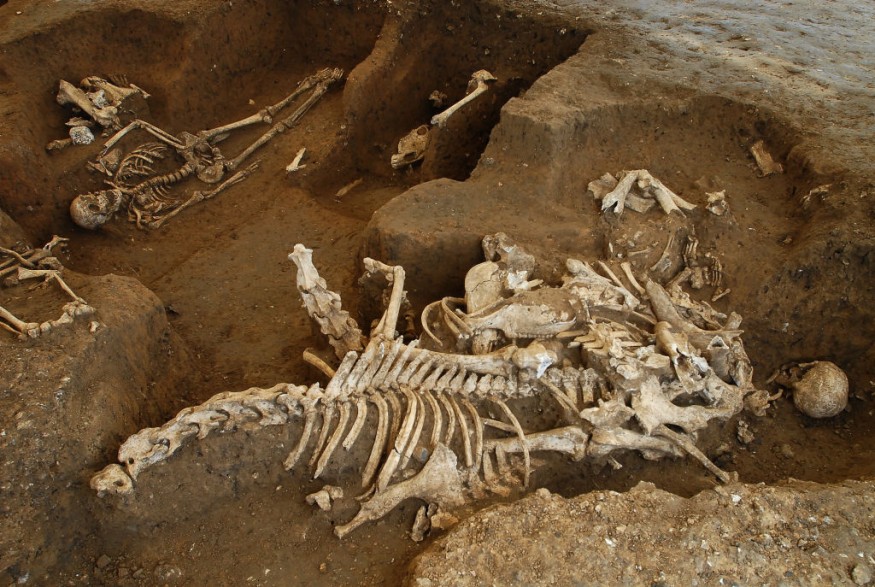Archaeologists have made a fascinating find in Wales, discovering the remains of a man buried in a facedown position near a Roman villa. The buried individual was adorned with a silver pin and a sword, indicating a possible Roman soldier. The presence of large nails near the neck, back, and feet provide intriguing evidence suggesting that the man may have been restrained during his burial.
Verve Times reported that the discovery was made during a road improvement project near the town of Barry in South Wales. Aside from the soldier, they also found four other burials dating from the mid-third to late-fourth centuries, which are believed to be associated with the previously excavated Whitton Lodge Roman villa, shedding new light on its historical significance.

Elite Roman Soldier May Have Been Restrained
A young man in his early twenties was buried in a rock-cut grave that may have had wooden boards around its sides, as evidenced by the finding of nails at the pit's top and bottom.
Archaeologist Mark Collard told Live Science that the man's facedown position and the presence of large nails at the back of his neck, shoulder, and feet may indicate that he was restrained during burial.
Despite initial assumptions of a non-elite or enslaved individual, the man's personal belongings, including an iron sword, hobnailed boots, and a silver crossbow brooch, suggest that he might have belonged to the elite ranks of the Roman military.
Senior curator Evan Chapman highlighted the significance of the silver crossbow brooch, as it represents the first such discovery in Wales. These brooches were commonly associated with the Roman military and were likely used to fasten cloaks. The presence of the sword further supports the connection to the military.
Detailed examination of the man's skeletal remains provided additional insights into his life. It was discovered that he suffered from mastoiditis, a bacterial infection affecting the mastoid bone behind the ear. While this infection can be easily treated with antibiotics today, it would have been life-threatening in Roman times.
Isotopic analysis of the man's bone and tooth enamel revealed that he likely originated from the eastern regions, possibly near the Welsh borders or even beyond. This raises intriguing questions about why a wealthy individual ended up on a farm in south Wales at the time of his death. The findings offer glimpses into the man's background and pose interesting avenues for further research.
READ ALSO : 2,000-Year-Old Roman Mausoleum Unearthed in Central London, the Most Well-Preserved in the UK
Notable Roman Burials
The man's burial posture, facedown, is notable, as is the finding of an adjacent cemetery holding a beheaded body with its skull put at its feet.
As Live Science reported, similar occurrences of prone and decapitated burials have been observed in other Roman Britain burials, indicating a distinct association. At Knobb's Farm, a Romano-British cemetery near Cambridge, a significant number of non-traditional burials were found. Among the 52 burials, 25% were prone and 33% were decapitated.
Although patterns of unconventional burials during the Roman period in Western Europe have gained attention, a definitive explanation for these practices remains elusive. Prone burials are never viewed positively across different cultures and may have been associated with individuals of low status, criminals, or those whose communities wanted to ensure their permanent demise.
The burial of this Roman soldier poses an intriguing mystery that may never be fully resolved. The fact that he was buried facedown but still adorned with his "regalia" raises more questions than answers, according to Collard. The circumstances surrounding this unique burial add to the complexity of understanding ancient burial practices and the specific motivations behind them.
RELATED ARTICLE: 40 Decapitated Skeletons Found in Ancient Cemetery Along With Artifact Prove Roman Settlement in the Area
Check out more news and information on Archaeology in Science Times.
© 2025 ScienceTimes.com All rights reserved. Do not reproduce without permission. The window to the world of Science Times.










